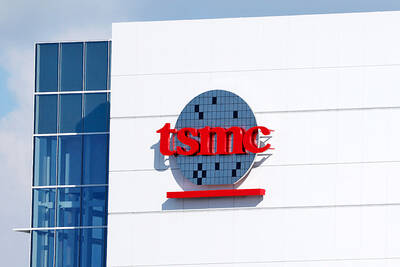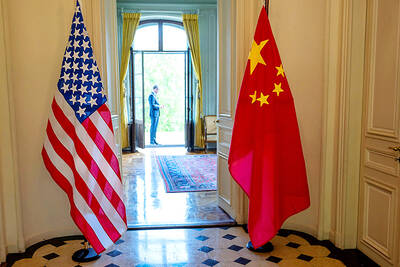Gold consumption fell by an annualised 16 percent in the second quarter of the year as Chinese and Indian buyers cut back on record purchases a year earlier, sector data showed yesterday.
A director of the World Gold Council (WGC) forecast the full-year result would also be lower than last year, but would probably not represent as big a drop as during the three months from April through June.
A total of 964 tonnes of gold was bought in the quarter, according to figures compiled by the WGC, a federation of the biggest producers.
The decline was largely the result of weaker jewelry purchases, which typically account for half of global demand, and which were 30 percent lower at 510 tonnes, the data showed.
In the two biggest consumer countries, China and India, demand for gold jewelry was down by 45 percent and 18 percent respectively, with specialists pointing to market saturation following records set last year.
“It’s important to remember that last year was an exceptional year in the gold market ... with a big fall in the gold price, very large exchange-traded fund redemption, and massive increase in consumer demand,” WGC managing director of investment strategy Marcus Grubb told reporters.
He referred to a 28 percent drop in the price last year, and also to financial exchange-traded funds that are based on gold stocks.
Grubb said the market appeared to be stabilizing and that the outlook was “likely to look better later in the year than it is now, although it will be down on last year but not as much as these figures suggest.”
Two factors were expected to underpin gold prices, he said.
They were further easing in monetary policy by the European Central Bank, which could free up funds for investment, and the fact that “geopolitical risks are increasing and unlikely to go down.”
Central banks rWemained net buyers of gold for the 14th consecutive quarter.
The WGC figures showed them buying a total of 117.8 tonnes — an increase of 28 percent.
Russia was one of the biggest buyers, adding 54 tonnes to its stocks.

Real estate agent and property developer JSL Construction & Development Co (愛山林) led the average compensation rankings among companies listed on the Taiwan Stock Exchange (TWSE) last year, while contract chipmaker Taiwan Semiconductor Manufacturing Co (TSMC, 台積電) finished 14th. JSL Construction paid its employees total average compensation of NT$4.78 million (US$159,701), down 13.5 percent from a year earlier, but still ahead of the most profitable listed tech giants, including TSMC, TWSE data showed. Last year, the average compensation (which includes salary, overtime, bonuses and allowances) paid by TSMC rose 21.6 percent to reach about NT$3.33 million, lifting its ranking by 10 notches

Popular vape brands such as Geek Bar might get more expensive in the US — if you can find them at all. Shipments of vapes from China to the US ground to a near halt last month from a year ago, official data showed, hit by US President Donald Trump’s tariffs and a crackdown on unauthorized e-cigarettes in the world’s biggest market for smoking alternatives. That includes Geek Bar, a brand of flavored vapes that is not authorized to sell in the US, but which had been widely available due to porous import controls. One retailer, who asked not to be named, because

SEASONAL WEAKNESS: The combined revenue of the top 10 foundries fell 5.4%, but rush orders and China’s subsidies partially offset slowing demand Taiwan Semiconductor Manufacturing Co (TSMC, 台積電) further solidified its dominance in the global wafer foundry business in the first quarter of this year, remaining far ahead of its closest rival, Samsung Electronics Co, TrendForce Corp (集邦科技) said yesterday. TSMC posted US$25.52 billion in sales in the January-to-March period, down 5 percent from the previous quarter, but its market share rose from 67.1 percent the previous quarter to 67.6 percent, TrendForce said in a report. While smartphone-related wafer shipments declined in the first quarter due to seasonal factors, solid demand for artificial intelligence (AI) and high-performance computing (HPC) devices and urgent TV-related orders

MINERAL DIPLOMACY: The Chinese commerce ministry said it approved applications for the export of rare earths in a move that could help ease US-China trade tensions Chinese Vice Premier He Lifeng (何立峰) is today to meet a US delegation for talks in the UK, Beijing announced on Saturday amid a fragile truce in the trade dispute between the two powers. He is to visit the UK from yesterday to Friday at the invitation of the British government, the Chinese Ministry of Foreign Affairs said in a statement. He and US representatives are to cochair the first meeting of the US-China economic and trade consultation mechanism, it said. US President Donald Trump on Friday announced that a new round of trade talks with China would start in London beginning today,